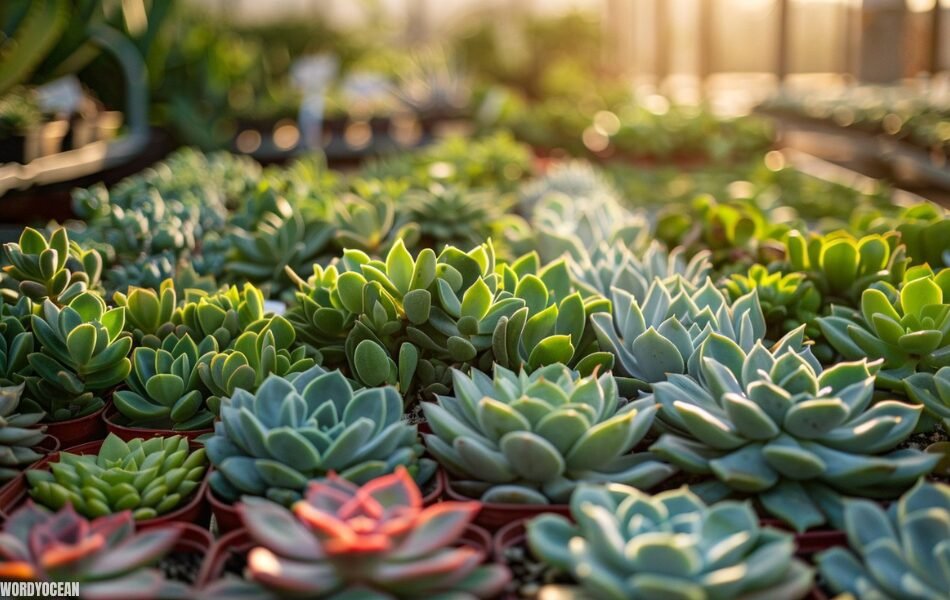A Beginner’s Guide to Cassiculas: A Hidden Gem

Cassiculas, a genus of succulent plants native to South Africa, are gaining popularity among plant enthusiasts. These unique plants, with their diverse shapes and textures, offer a captivating addition to any succulent collection. This comprehensive guide will delve into the fascinating world of cassiculas, providing essential tips for care, propagation, and identification.
It are characterized by their succulent leaves, which can vary in shape from cylindrical to flattened. They often form low-growing mats or clumps, and their vibrant colors, ranging from deep green to reddish-brown, make them visually striking.
While not as widely recognized as other succulent genera, it have garnered attention for their resilience and adaptability. They thrive in well-draining soil and require minimal care, making them suitable for both seasoned gardeners and beginners.
Recognizing the Unique Beauty of Cassiculas
Cassiculas, with their distinctive features, are easy to identify once you know what to look for. These fascinating succulents typically exhibit succulent leaves that can vary widely in shape and size, from cylindrical to flattened. Their growth patterns are equally diverse, often forming low-growing mats or clumps.
Among the many captivating cassicula species, C. mesembryanthemopsis stands out with its striking, reddish-brown leaves. It forms dense mats and is a popular choice for rock gardens or container plantings. Another notable species is C. compacta, which features compact rosettes of succulent leaves. It is well-suited for small spaces and can add a touch of elegance to any succulent collection.
By understanding these key characteristics and familiarizing yourself with popular species, you can confidently identify and appreciate the beauty of cassicula.
Nurturing Your Cassiculas: A Care Guide
To ensure the health and vitality of your cassicula, it’s essential to provide them with optimal growing conditions.
It thrive in bright, indirect light. A south-facing window is ideal, but they can also adapt to slightly less intense light. During the summer months, consider moving your plants outdoors to a shaded location, gradually acclimating them to the increased sunlight. However, be cautious of scorching, especially during the hottest part of the day.
One of the most crucial aspects of cassicula care is proper watering. These succulents are well-adapted to drought and can tolerate periods of dryness. Overwatering is a common mistake that can lead to root rot. To avoid this, allow the soil to dry out completely between waterings. A good rule of thumb is to water deeply, but infrequently. In winter, reduce watering significantly as the plants enter a dormant period.
A well-draining soil mix is essential for cassiculas. A combination of cactus or succulent potting mix and perlite or pumice will provide the ideal growing medium. When potting your plants, choose a container with drainage holes to prevent waterlogged soil.
It prefer warm temperatures, ideally between 65°F and 80°F (18°C to 27°C). They can tolerate slightly cooler temperatures, but prolonged exposure to cold can damage the plants. Moderate humidity is sufficient for these succulents. High humidity can lead to fungal diseases, so ensure good air circulation around your plants.
Multiplying Your Cassiculas: A Propagation Guide
It are relatively easy to propagate, allowing you to expand your collection or share these beautiful plants with others. Two common methods of propagation are leaf propagation and stem cuttings.
Leaf propagation is a simple and effective method for propagating many succulent species, including cassiculas. To begin, carefully select healthy, mature leaves from your plant. Gently twist or pull the leaves off the stem, ensuring that a small piece of the stem remains attached. Allow the leaves to callus over for a few days, then place them on a well-draining soil mix or a tray of moist perlite.
To create a humid environment, cover the container with a clear plastic bag or dome. Place the container in a warm, bright location, but avoid direct sunlight. Within a few weeks, you should see small plantlets emerging from the base of the leaves. Once the new plants have developed roots, you can carefully transplant them into individual pots.
Stem cuttings are another popular method for propagating cassiculas. To propagate your plant using stem cuttings, select a healthy stem and cut it into sections, each with at least two leaves. Allow the cuttings to dry for a few days to form a callus, then plant them in a well-draining soil mix. Keep the soil slightly moist and place the pot in a warm, bright location.
As with leaf propagation, you can cover the pot with a plastic bag or dome to create a humid environment. Once the cuttings have rooted, you can remove the cover and gradually acclimate the new plants to normal growing conditions.
By following these simple steps, you can successfully propagate your cassicula and enjoy a thriving collection of these beautiful succulents.
Styling and Displaying Cassiculas: A Creative Approach
The way you style and display your it can significantly enhance their visual appeal. The choice of container plays a crucial role in creating an aesthetically pleasing arrangement.Terracotta pots enhance the natural beauty of succulents. Ceramic pots, on the other hand, offer a more modern and minimalist look.
When it comes to displaying cassiculas, the possibilities are endless. You can create stunning indoor arrangements by combining them with other succulents or cacti in a variety of containers. Succulent gardens, terrariums, and wall planters are popular options for showcasing these plants.
For outdoor enthusiasts, it can add a touch of exotic beauty to rock gardens, succulent beds, or container gardens. Their low-growing habit and vibrant colors make them ideal for groundcover or edging plants.
By experimenting with different containers and display ideas, you can create unique and eye-catching arrangements that highlight the beauty of your cassicula.
Styling and Displaying Cassiculas: A Creative Approach
The way you style and display your it can significantly enhance their visual appeal. The choice of container plays a crucial role in creating an aesthetically pleasing arrangement.Terracotta pots enhance the natural beauty of succulents. Ceramic pots, on the other hand, offer a more modern and minimalist look.
When it comes to displaying cassiculas, the possibilities are endless. You can create stunning indoor arrangements by combining them with other succulents or cacti in a variety of containers. Succulent gardens, terrariums, and wall planters are popular options for showcasing these plants.
For outdoor enthusiasts, it can add a touch of exotic beauty to rock gardens, succulent beds, or container gardens. Their low-growing habit and vibrant colors make them ideal for groundcover or edging plants.
By experimenting with different containers and display ideas, you can create unique and eye-catching arrangements that highlight the beauty of your cassicula.
Conclusion: Nurturing Your Cassicula Collection
By understanding the unique characteristics of cassiculas and providing them with optimal care, you can cultivate a thriving collection of these captivating succulents. Remember to choose well-draining soil, provide ample sunlight, and water sparingly. By following these guidelines, you can enjoy the beauty and resilience of these remarkable plants.
To delve deeper into the world of cassiculas, consider joining online succulent forums or communities. These platforms offer opportunities to connect with fellow enthusiasts, share experiences, and learn from experts.
We encourage you to share your own cassicula journey with us. Whether you’re a seasoned succulent grower or a beginner, we’d love to hear about your experiences, tips, and successes. Please feel free to comment or contact us.
FAQ’s
Q: What are Cassiculas?
A: They’re a genus of succulents from South Africa, coming in many shapes, sizes, and colors.
Q: How do I identify Cassicula?
A: It typically have succulent leaves that can vary in shape from cylindrical to flattened. They often form low-growing mats or clumps. Popular species include C. mesembryanthemopsis and C. compacta.
Q: How do I care for Cassiculas?
A: It thrive in bright, indirect light. They need well-draining soil and infrequent watering. They thrive in warm, humid conditions.
Q: How can I propagate Cassicula?
A: It can be propagated through leaf propagation or stem cuttings. For leaf propagation, gently remove a mature leaf and allow it to callus over before planting it in a well-draining soil mix. For stem cuttings, cut a healthy stem into sections and allow the cuttings to callus over before planting.







